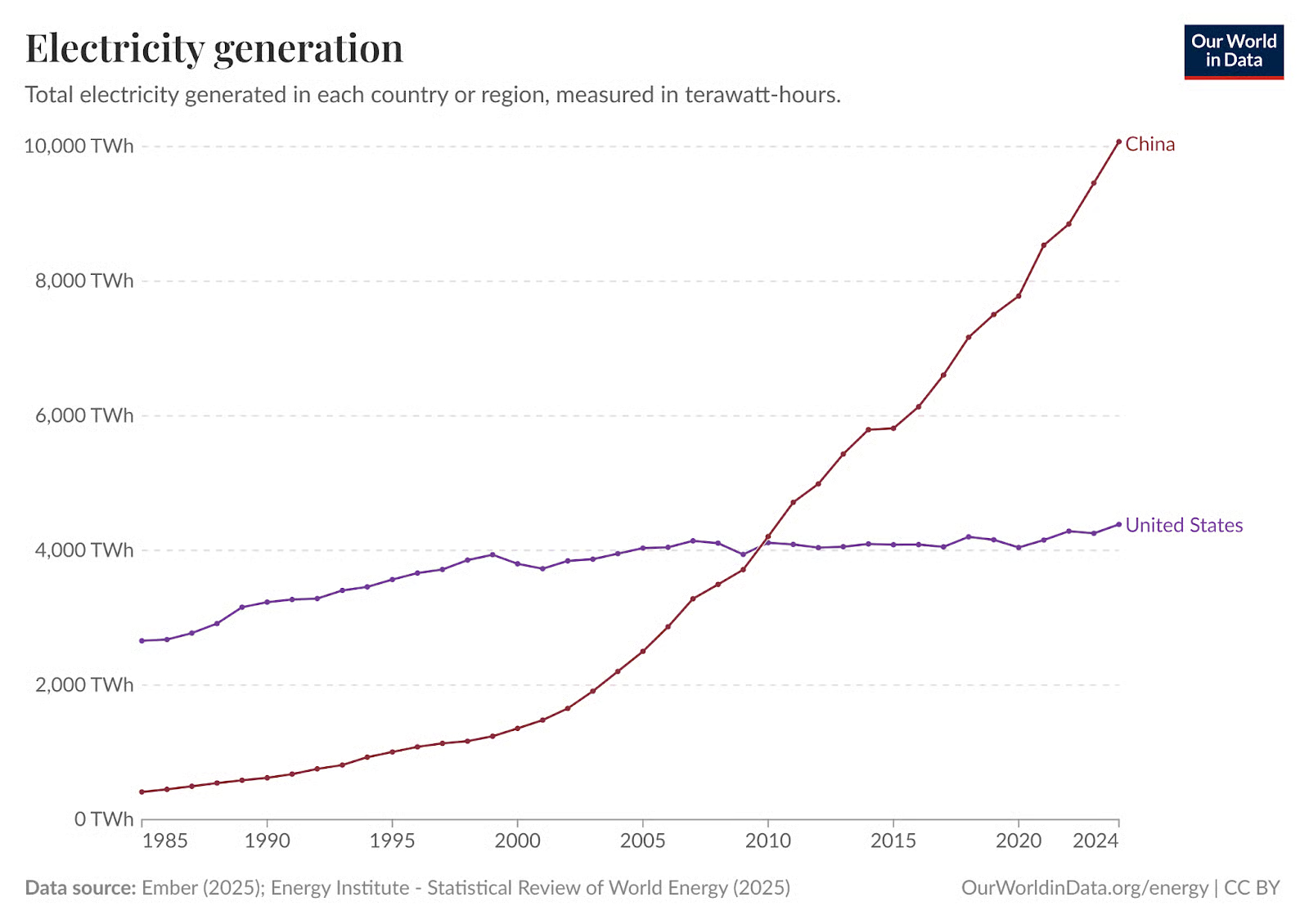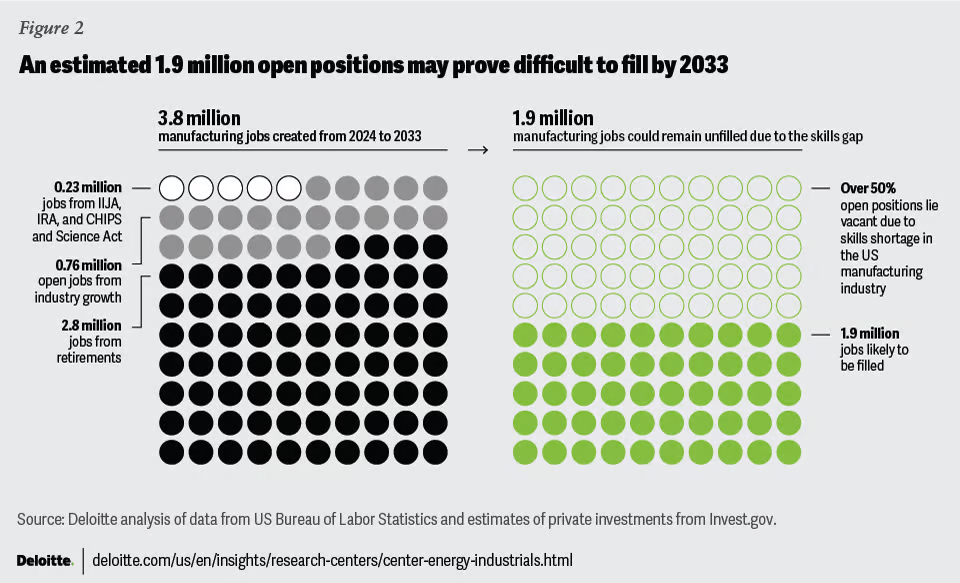We launched Per Aspera ~100 days ago with a bet: that a renaissance was stirring in the hardest pursuits of science, industry, and technology. In that short time, we’ve witnessed enough to prove the thesis….while discovering just how far we still have to go. This is the state of the renaissance as summer 2025 draws to a close.
Star of the Season, or Summer Slump?
Artificial intelligence was the main character this summer. AI startups captured a majority (53%) of venture funding in H1 2025 — in the U.S., that share was even higher, at 64%. For us, the real story is measured not in headlines about the AI application/wrapper layer, but in the billions upon billions poured into the physical bedrock of computation. Between now and 2029, Morgan Stanley expects global datacenter spending to approach $3T – roughly the size of France’s economy. Nearly half of that capex is expected to flow from the balance sheets of hyperscalers/Big Tech (Amazon, Microsoft, Google, Meta). The remaining $1.5T will need to be filled by external investors and developers, setting off the largest construction and financing boom in the history of digital infrastructure.
AI has had some wind knocked out of its sails in recent weeks, with mounting mentions of the B-word, as frontier lab leaders reset expectations and corporate pilots overwhelmingly fall flat.
An Energetic Stagehand
If AI was the star of summer, energy was the stagehand struggling under its weight. Datacenters are now the largest incremental source of electricity demand in America. Northern Virginia developers alone have filed power requests equivalent to the entire load of NYC. Lead times for high-voltage transformers have stretched to 4–5 years. Utilities invested $178B in 2024 capex, the 13th annual record in a row, yet after a decade of flat demand, it still isn’t enough. Uncle Sam, hyperscalers, and opportunistic state governments are looking toward the cavalry on the horizon – nuclear – but it doesn’t arrive fast enough to unclog today’s grid queues.

Inputs, Chips, & Minerals
Summer reminded us that trillions poured into AI and energy mean little without control over inputs. Without wafers, magnets, uranium, and processing capacity, the renaissance is fundamentally rate-limited.
On chips, the U.S. just confirmed that it’s taken a 10% stake in Intel, underscoring both the fragility and centrality of America’s last integrated chipmaker. $200–300B of fab investment has been announced across Ohio, Arizona, Texas, and New York, but the bleeding edge remains abroad.
Minerals tell a parallel story. China’s springtime rare earth squeeze forced Ford to idle its Chicago line, spiked prices, and rattled defense primes. The U.S. remains 100% import-dependent on 12 critical minerals and 50+% reliant on 31 others. This summer brought progress, but there’s much more work to be done.
Human Capital
The renaissance happens on factory floors, job sites, and control rooms, and right now, those places are running out of hands. Across semiconductors, batteries, aircraft, robots, minerals, ships, and grids, the bottleneck is often talent. Projects hit the same wall again and again: not enough welders, machinists, electricians, or operators.

America’s generational bets are not just competing with foreign rivals — they’re competing with each other for the same scarce pool of skilled hands.
The upshot
Summer 2025 showed both strength and fragility: capital is flowing and factories are breaking ground, but shortages of power, inputs, and people threaten to choke the momentum. Week by week, it seems that physics, policy, and the powers that be are conspiring to push this forward. What will determine whether this moment endures, though, is breadth and depth:
- Breadth: training and mobilizing enough welders, machinists, electricians, and engineers (or, deploying a workable technological substitute)
- Depth: preserving, rediscovering, and scaling the tribal knowledge and process mastery that turn theory into reality.
Without breadth, the renaissance starves for hands. Without depth, we revert to dependency. Above all, the hard path means cultivating stronger men and women willing to do the work. As JFK said: do not pray for easy lives, pray to be stronger. That is what this renaissance demands.
